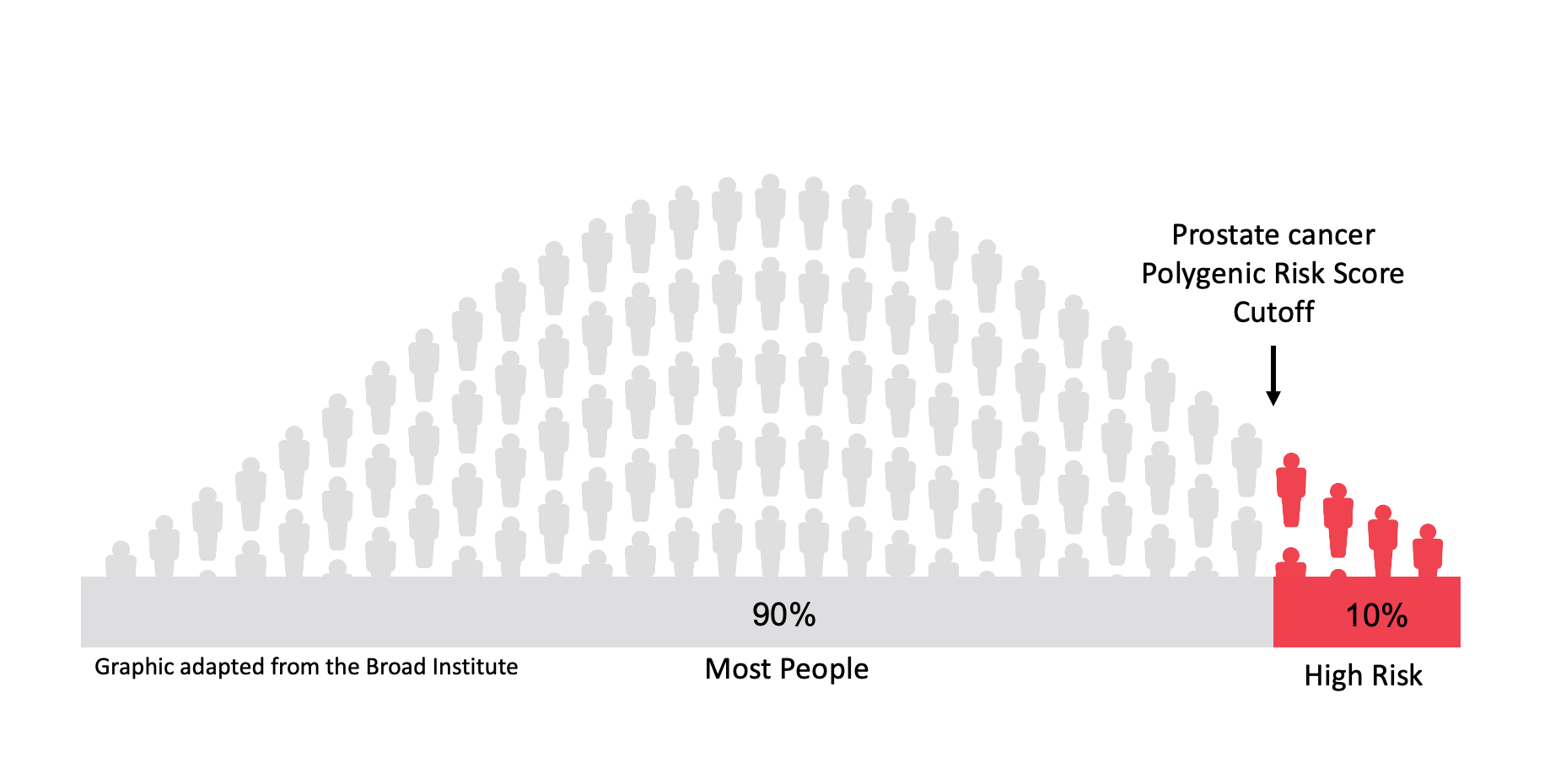Prostate Cancer (Adults): Understanding Your Results
What is prostate cancer?
- Cancer is a disease in which cells in the body grow out of control. When cancer starts in the prostate, it is called prostate cancer. The prostate is a part of the male reproductive system; it produces fluid that makes up a part of semen, the prostate is located just below the bladder and in front of the rectum.
- Not including skin cancer, prostate cancer is the most common cancer in American men. Both genetic and environmental factors contribute to prostate cancer risk. The most common risk factor for prostate cancer is age. The older a man is, the greater the chance of getting prostate cancer.
- African American men are more likely to get prostate cancer than other men, more likely to get prostate cancer at a younger age, and tend to have a more severe type of prostate cancer than other men.
What does high risk for prostate cancer mean?
- On average, about 13 out of 100 men, or 13% of men, in the United States will get prostate cancer in their lifetime.
- Your risk of prostate cancer is high because of one of the following reasons:
- You have a blood relative with prostate cancer.
- The presence of family history of prostate cancer indicates your risk is 2-3 times higher than the average person.
- The presence of family history of prostate cancer indicates your risk is 2-3 times higher than the average person.
- You have a high polygenic risk score (PRS) for prostate cancer.
- Your polygenic risk score is in the top 10%. This means that you may have a higher genetic risk for prostate cancer than 90 out of 100 men.
- High polygenic risk for prostate cancer means your risk for developing prostate cancer is 3-3.5 times higher than those in the bottom 90%.
- Your polygenic risk score is in the top 10%. This means that you may have a higher genetic risk for prostate cancer than 90 out of 100 men.
- You have a blood relative with prostate cancer.

- This result does not mean that you have prostate cancer or that you will definitely develop prostate cancer in your lifetime.
- This polygenic risk score was created using genetic information from large research studies of people with European, Asian, African, and Hispanic/Latino descent. We outline how this score was created below:
- DNA differences in each population were picked up that are linked to prostate cancer risk
- These DNA differences were combined into a single score, called a “trans-ancestry polygenic risk score”
- This score was tested using genetic information from other research studies with different populations and was accurate
- DNA differences in each population were picked up that are linked to prostate cancer risk
- Larger research studies are needed in people of Asian and Hispanic/Latino descent to refine the risk range for these populations – see the Broad PRS report attached.
What can you do to lower your risk for Prostate Cancer?
- Not everyone who is at high risk for prostate cancer will get it. Talk to your doctor(s) or healthcare provider about how to decrease your chances of getting prostate cancer.
- People who are at high risk for prostate cancer may be able to lower their risk by talking with their doctor about prostate cancer screening starting at age 40.
- Prostate cancer screening may include a blood test called a prostate specific antigen (PSA) test and/or a digital rectal exam.
- Screening for prostate cancer is an individual decision. Talk with your doctor about the specific risks and benefits of prostate cancer screening to decide on a screening plan that is right for you.
What are your next steps?
- You should share these results with your doctor(s) or other healthcare provider to discuss
actions to be taken to lower your risk. - You may also want to share your results with your family members.
- Your results will be uploaded to your electronic health record for you to review and will be
available to your doctor(s) and other healthcare providers. - If you have any questions about your results, please contact the study team at your
institution. You can find this contact information on the cover page of the GIRA.
